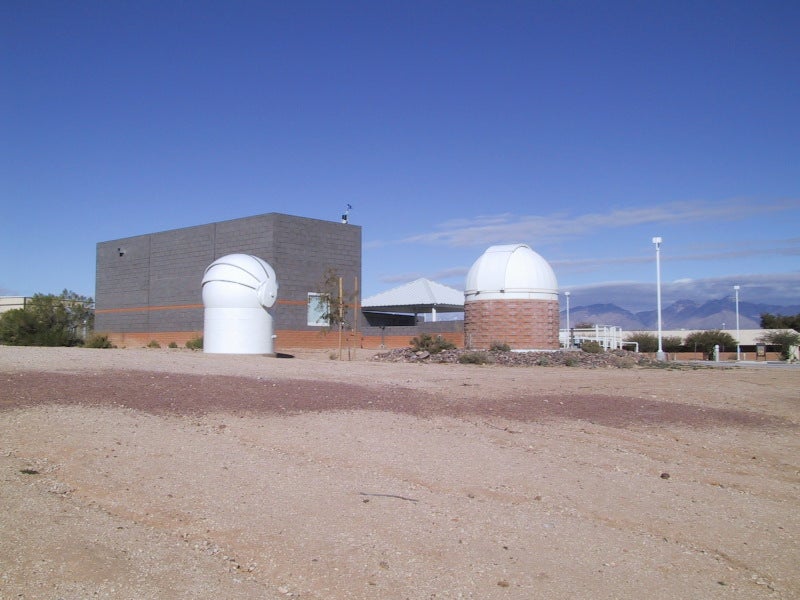This event will feature astronomy-based talks, displays, and handouts (including Astronomy magazine). But the highlight will occur throughout the day because members of the Tucson Amateur Astronomy Association (TAAA) will have telescopes set up with the proper filters to conduct safe solar observing. Join the festivities, and see sunspots, prominences, and flares.
Then, as the air cools after sunset, the party will start to heat up as the TAAA turns telescopes large and small toward fascinating cosmic targets. And the two 14-inch telescopes in PCC’s observatory will be providing fine celestial views as well.
“You may think that sky objects are invisible from a city,” Astronomy Senior Editor Michael E. Bakich says, “but using high-quality instruments and the right filters, TAAA members will show you some real treats.”
Once twilight begins, local astronomers will help visitors spot elusive Mercury low in the west. And even before that, the 42-percent-illuminated Moon will be a prime target for telescopes large and small. Then as darkness falls, the giant planet Jupiter, which will lie 18° east of our natural satellite, will attract lots of attention. At first, three of Jupiter’s four large moons will be in view. As the evening progresses, however, the innermost one, Io, also will appear.
And there’s more. Attendees will see magnified views of vastly distant objects like the Orion Nebula (M42), one of the sky’s great star-forming regions. The brightest star cluster, the Pleiades (M45), will appear dazzling through wide-field scopes and binoculars. And have you ever seen the expanding shell of a dead star? You will when you look at the Crab Nebula (M1), a supernova remnant in the constellation Taurus the Bull. Finally, as the Moon begins to sink in the west, telescopes will turn toward galaxies rising in the east, where one view through the eyepiece will reveal a collection of billions of stars.
In addition to observing the sky, you’ll be able to learn a lot about astronomy by attending talks throughout the day. And what a lineup! Keith Schlottmann, president of the TAAA, will tell you about the local amateur astronomy scene in “Amateur Astronomy in Southern Arizona: An Embarrassment of Riches.” Scott Kardel, president of the International Dark Sky Association (IDA), will present “Light Pollution: Perspectives from Earth and Space.” And Astronomy Contributing Editor and meteoriticist Mike Reynolds not only will give an entertaining talk called “Meteorites!” but he also will pass around samples of space rocks for you to view.
Some staff from Astronomy magazine also will present talks. Editor David J. Eicher will highlight the latest findings in the science when he presents “Astronomy’s New Frontier.” And Senior Editor Bakich will discuss things that go “Boom!” in the night in “Star Death.”
And there’s more. Several groups will have tabletop displays that discuss various aspects of astronomy and space science. Those that plan to exhibit include the TAAA, the IDA, the University of Arizona’s Mount Lemmon SkyCenter, and the Girl Scouts of America. In addition, Reynolds may have some meteorites for sale, and Astronomy will have a table where visitors can pick up a copy of the magazine or the 16-page booklet “How to Buy Your First Telescope.”
So, mark your calendar for February 16, and get ready for a day full of sky views, discovery, and fun.
The observatory sits on Pima Community College’s East Campus at 8181 East Irvington Road, Tucson, Arizona 85709.











